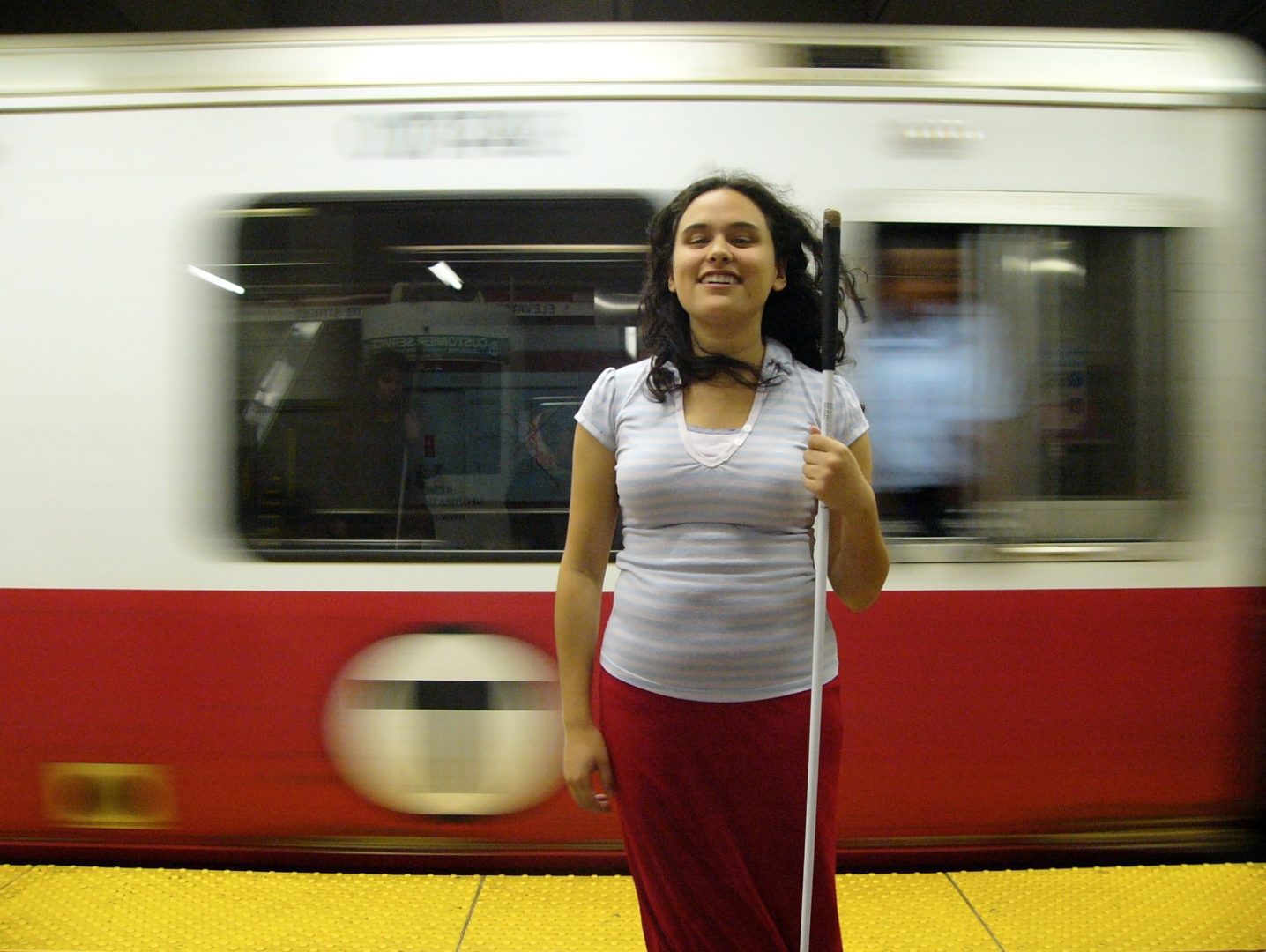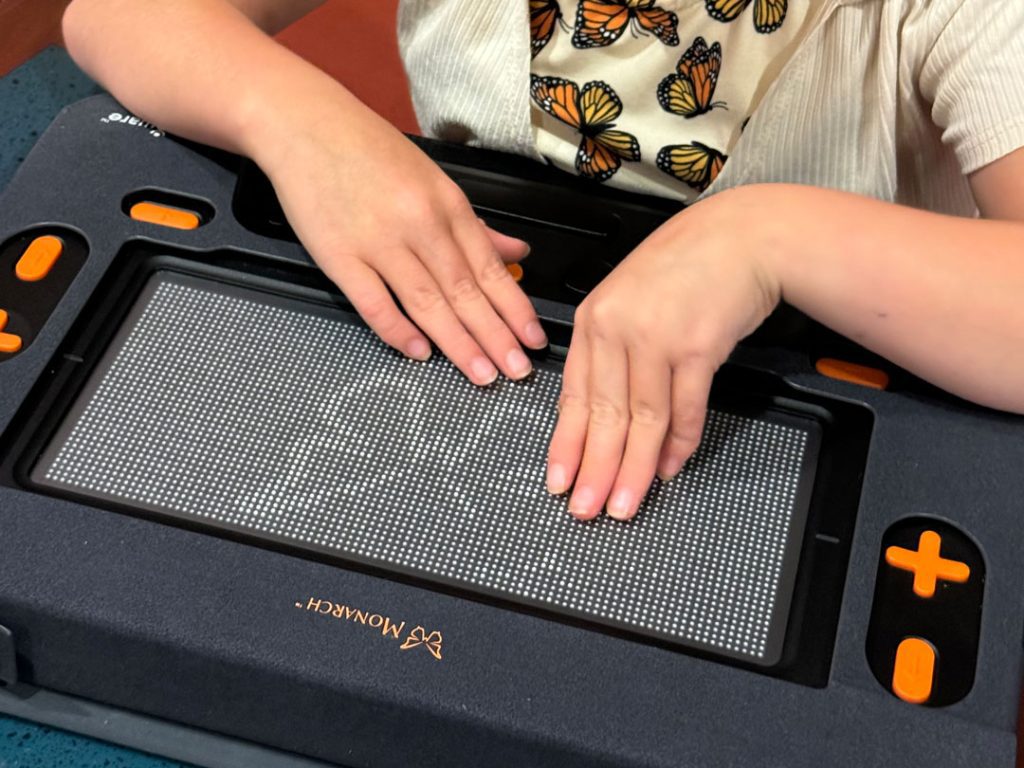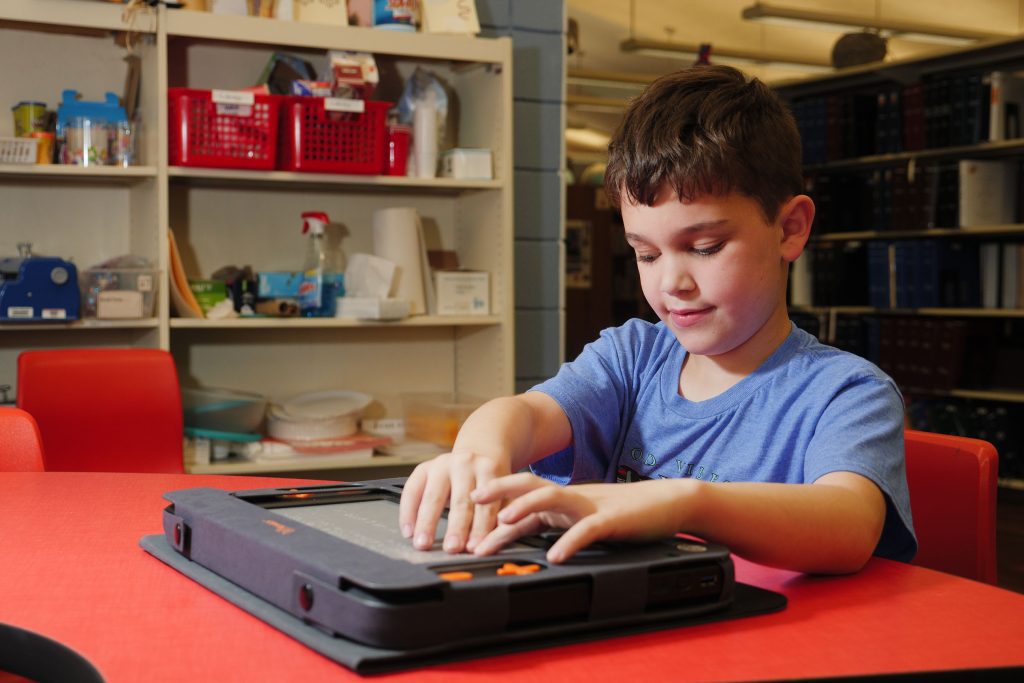To ensure gift delivery by 12/25, please place orders via UPS shipping no later than 12/17.
CloseThe Cognitive Science Behind Braille on the Monarch

The Monarch’s multiline braille display can be used to read textbooks, essays, novels, and more, but what’s actually happening inside a person’s brain when they’re reading braille on the Monarch? Researchers at Johns Hopkins University are attempting to discover the answer to that question. Research assistant Lindsay Yazzolino gave us a glimpse into the fascinating work these researchers are doing.
Meet Lindsay
Lindsay is an independent consultant specializing in tactile design and has been a research assistant and consultant for several projects at Johns Hopkins and MIT. She majored in cognitive science at Brown University and quickly discovered a relationship between vision and cognition in her courses. “I would take these cognition classes and so much of what we studied always seemed to have a visual component. Things like, ‘How do we understand space? Well, we look at stuff. How does attention work? We look at stuff,’” said Lindsay. “Obviously some of us don’t do that…we have cognition, too, and very robust cognition. I kept finding myself thinking, how do we understand the world and what don’t we know about our own experiences as blind people?” These questions fascinated Lindsay and inspired her to pursue cognitive science.
Putting in the Work
Lindsay has worked closely with Marina Bedny, an associate professor at Johns Hopkins in the psychological and brain sciences department, on several projects, including her current project involving the Monarch. “There’s been a lot of work she’s [Marina] been doing on cognition related to braille reading,” said Lindsay. “As we’re reading braille we’re asking, ‘What’s going on in the brain? What’s going on cognitively? How are we processing braille as we’re reading it?’” For the research being done with the Monarch, Lindsay has spent a lot of time testing out materials, like passages in braille, to ensure they appear properly on the Monarch before study participants view them.
She also participated in an observational study which focused on examining the types of reading strategies braille readers use. She read a book on the Monarch while an overhead camera recorded her finger movements. The researchers used the footage to examine her reading speed alongside the strategies and patterns she used. They used the information from the footage of Lindsay to implement this study with a larger number of braille readers. The researchers created a special format of the book to make it easier to track what page and passage Lindsay was on. During this process, they sent feedback to experts at APH about how the Monarch formats documents.
Looking to the Future
Lindsay was impressed by how fast she could read on the Monarch and remarked that reading on the multiline braille display felt “organic…because you didn’t have to pause to advance the display.” She’s very interested in how audio can be used to enhance tactile graphics, like maps and graphs, and what that experience would be like on the Monarch.
Lindsay sees a lot of potential areas for research involving the Monarch. She believes future research could explore cognitive processes related to viewing tactile graphics on a multiline display, how viewing braille and tactile graphics in the same document using eBraille affects students, and how the Monarch is being used by students in higher education and professionals in a wide variety of fields. “People in different fields will have different things they’re doing,” said Lindsay. “It would be interesting to see how people in different lines of work can use the tactile graphics capabilities in the Monarch.”
Share this article.
Related articles

Experience a New Point of View: Learning with the Monarch
Every experience is a learning experience. For students who are blind or low vision, this may include an introduction to...

Developing Reading and Spelling Skills on the Monarch
Literacy is one of the cornerstones of education. APH’s Monarch is overcoming obstacles to enhance reading and spelling skills for...
